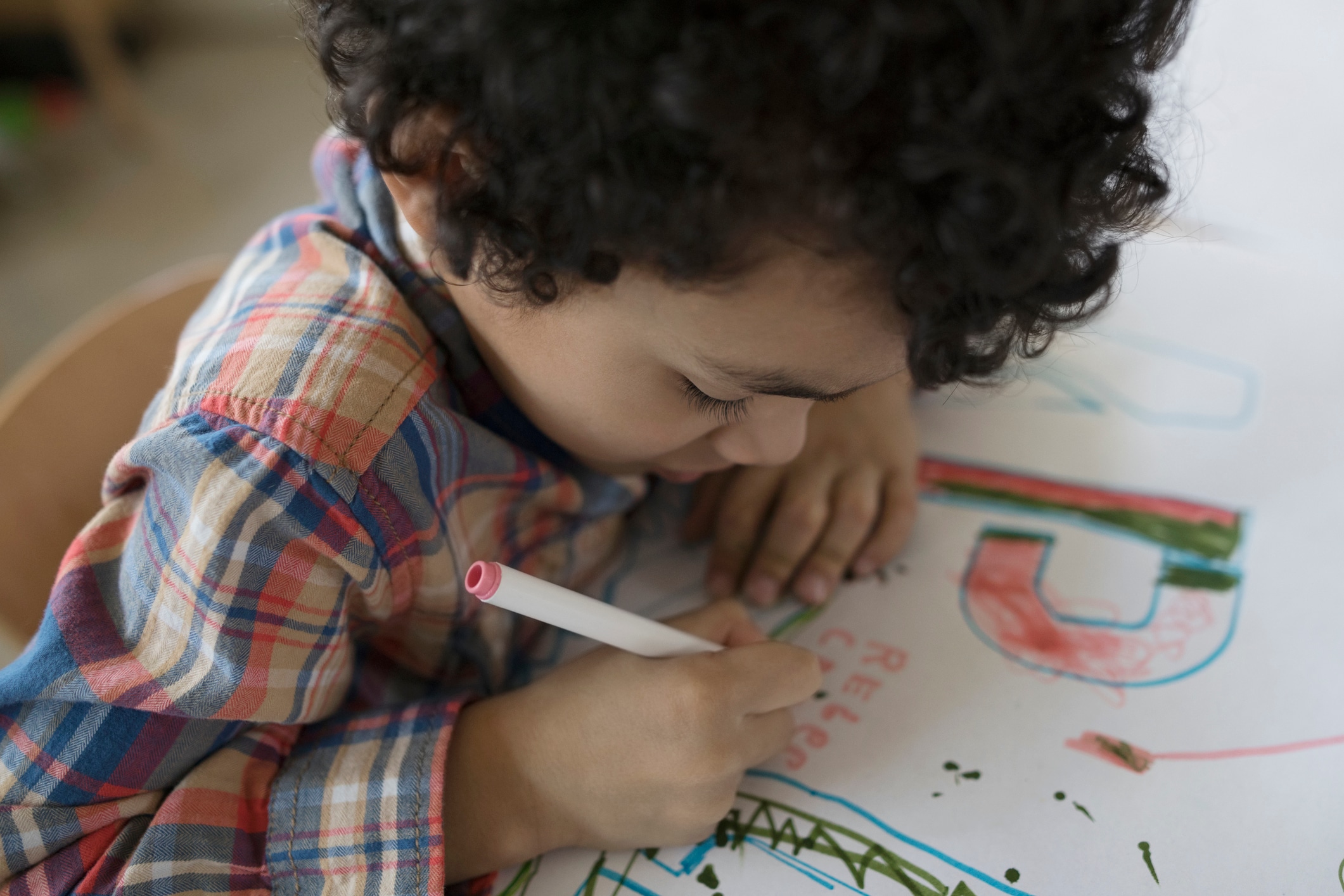The newest generations of parents face what can feel like an impossible task: navigating social media and tech access for their children. With their children’s mental health in mind and concerns such as bullying and exposure to inappropriate content to navigate, it’s no wonder parents are considering whether it’s best to hold off on giving kids access to social media and smart devices. After all, children can also find it difficult to handle the addictive nature of social media.
“If our fully developed adult brain can barely handle the addiction of social media, you can imagine how the child brain fares,” says Lauren Cook, a clinical psychologist and author of “Generation Anxiety.” “Given that the brain doesn’t finish developing until age 25, it’s understandable that kids struggle that much more with the self-control, planning and reasoning that is required when using social media.”
Given these concerns, it’s no wonder authors like Jonathan Haidt, who recently published “The Anxious Generation: How the Great Rewiring of Childhood Is Causing an Epidemic of Mental Illness” and even celebrities like Chip and Joanna Gaines, who give their kids access to social media when they finish high school, are weighing in. Despite the increased awareness, however, restricting social media can feel like an impossible task as parents swim against the tide of others who don’t. But that doesn’t mean it isn’t a worthwhile effort, according to the experts and parents we spoke to. Read on for the tips and tricks they shared on navigating slowing down tech and social media access for children.
How tech affects kids
While it might be hard for parents to hear their kids bemoan the fact that all of their friends are on social media, they’re not really exaggerating. As of 2023, up to 95% of 13- to 17-year-olds and nearly 40 percent of 8-to-12-year-olds claim to use social media. Still, research doesn’t lie when it comes to the impact social media and early access to smart devices can have on children’s mental and physical health.
Depression and anxiety
“When the social lives of American teens moved largely onto smartphones loaded with social media apps between 2010 and 2015, the adolescent mental health crisis set in,” says Zach Rausch, associate research scientist at New York University and chief researcher for Jonathan Haidt.
He adds that “major depressive episodes among American teens have more than doubled since 2010, emergency department visits for self-harm episodes among preteen girls have more than tripled and suicide rates have also risen significantly.” And while he says we can’t blame the entire rise of poor mental health in recent years on social media, “The Anxious Generation” argues that it has played a pivotal role.
And it’s not just about whether or not a child uses social media; the time they spend on it matters too. According to Cook, the more children use social media, the worse their mental health. A study published in JAMA Psychiatry corroborates her statement. Researchers “found that adolescents who spent more than 3 hours per day on social media faced double the risk of experiencing poor mental health outcomes including symptoms of depression and anxiety.”
Body dysmorphia and appearance dissatisfaction
In addition to general anxiety and depression, social media use is also associated with a negative perception of one’s body in comparison to others. According to a study published in Frontiers in Psychology, highly visual social media (which most platforms fall under) fuels “the internalisation of unattainable beauty standards.”
Cook adds that body dysmorphia becomes more common the more kids use social media. “Their lens of the world is skewed — they have an inaccurate depiction of what an average body size looks like and what a ‘normal’ life looks like,” she explains. “Everything online can be glamorized, whether it’s a vacation, clothing or a body type. Kids can quickly feel like they’re not measuring up or what they have isn’t good enough.”
“Their lens of the world is skewed — they have an inaccurate depiction of what an average body size looks like and what a ‘normal’ life looks like. Everything online can be glamorized, whether it’s a vacation, clothing or a body type. Kids can quickly feel like they’re not measuring up or what they have isn’t good enough.”
— Lauren Cook, a clinical psychologist and author of “Generation Anxiety”
The movement to reclaim a play-based childhood
For parents who grew up before the internet was widely available, when the norm was to play outside with friends until the street lights came on, seeing their own children “playing” with their friends with their head hovering over their phone can be depressing. And they’re not imagining this perceived shift in play and socialization. In “The Anxious Generation,” Jonathan Haidt coined the phrase “The Great Rewiring” to describe the period between 2010 and 2015 in which, “kids’ social lives moved largely online (upwards of seven to nine hours a day) and away from in-person social interaction with friends, family and their local community,” says Rausch.
According to Rausch, this “‘Great Rewiring’ of childhood interferes with children’s social and psychological development,” leading to issues like sleep deprivation, addiction, loneliness and perfectionism.
For this reason, Haidt advises in “The Anxious Generation” that children are not given smartphones until 14 and that parents hold off on social media until they are at least 16 years old. Similarly, Cook advises waiting until at least high school, citing the US Surgeon General’s recommendation.
Some parents are already adopting a “slow-tech” strategy. Amanda Flesch, a part-time teacher and parent of four in Winona, Minnesota waited until her oldest was in seventh grade to give her a cell phone, and, with the exception of Instagram (with caveats), she is not allowed social media.
Another mom of a tween, Lisa A., a luxury travel advisor and parent of two in New Jersey, says her approach to “giving access to technology and social media has been much different than everyone around [her].” Even her younger child, who is entering third grade, has friends who have cell phones with social media access, including TikTok, Instagram, Snapchat and YouTube. Lisa has provided her soon-to-be seventh-grader with an Apple Watch when she turned 10, which allows her to text and call but not access the internet. But in her grade, she is only one of two kids who do not have a cell phone.
In addition to the concerns about social media exposure increasing the risk for depression and anxiety, Lisa listed some positive outcomes that come with taking social media out of the childhood equation, namely that “they will find other things to do,” whether that’s creating art, spending more time outside, reading or playing with mentally stimulating toys like Legos.
Tips for delaying access to smartphones and social media
While slow-tech might look different for every family, the parents and experts we spoke to agreed that waiting to grant access to social media is the right move. If you’re considering following this recommendation, here are some tips from the parents and experts we spoke to.
“If families worked together to delay smartphones and social media, there would be much more in-person socialization and play (and no more FOMO). Kids would gain the real-world experiences they need to eventually better manage the complexities of the virtual world.”
— Zach Rausch, associate research scientist at New York University and chief researcher for Jonathan Haidt
Create a pod of tech-free friends
It’s easier to stand firm on a contested subject when you have others to back you up. And the same goes for limiting or delaying social media.
As Rausch says, “No teenage girl wants to be the only one who is not on Instagram. No teenage boy wants to be the only one who cannot play Fortnite. No parent wants to make their child feel socially isolated. So, it’s fair to worry that a child could be socially isolated if all of their friends are on social media, and this may make the child feel worse. But this is precisely why we need to act collectively.”
He continues, “If families worked together to delay smartphones and social media, there would be much more in-person socialization and play (and no more FOMO). Kids would gain the real-world experiences they need to eventually better manage the complexities of the virtual world.”
And Flesch is proof that this approach can be effective. She has friends who share a similar philosophy on technology. “So when our kids say, ‘Everyone else has a phone,’ we can say, ‘Actually, so and so doesn’t yet either,’” explains Flesch.
Share the research
With any contentious decision, you’re bound to hear a lot of “why” from your children. And the best option here is to be straightforward. Both Lisa and Flesch said that they shared statistics and information with their kids on the effects of social media – how it can increase the risk for depression and anxiety, exacerbate body image issues and be addictive.
As Cook says, “We have to explain the why to our kids. When we share with them that the kids who weren’t online were actually happier,” they can examine how being without a phone or social media makes them feel.
Encourage in-person play
There simply is no replacement for in-person socialization. And encouraging it is one way to lessen the grip of social media, says Cook. “If we can have more kids coming together for face-to-face play, without cellphone use, the better off we will be,” she says. “The best social skills are developed in person. This is when kids have to get creative, break through the process of boredom for organic play and practice making conversation. They can learn how to foster real empathy when they’re engaging face-to-face.”
On the other hand: “When we give them phones, these processes are subverted, and it’s a shortcut to shallow socialization,” points out Cook.
Set rules and discuss etiquette
If you do allow your child to have a phone or social media, it’s important to ease them into use of either by setting ground rules ahead of time. Cook advises considering restrictions such as, only allowing people they know to follow their account and keeping their account settings set to private.
And emphasize that having a phone is a privilege and that appropriate use is required to keep it, advises Flesch. In her family, appropriate use includes requiring their daughter to not be on her phone when around others. She signed a cell phone contract, has Life360 installed on her phone and is required to dock her phone in the kitchen at 8 p.m. Additionally, both Flesch and Lisa implemented screen time limits for their children.
“This is also an opportunity to show our kids that we can handle setting boundaries, both with ourselves and with others. Our kids may not like that, but they are also seeing it powerfully modeled that we are willing to do what we think is right [for our family].”
— Lauren Cook
How to address challenges from kids
When kids are seeing most, if not all, of their friends being given free rein of social media, they’re bound to resist delayed access. Despite feeling very strongly about not having her children use social media, Lisa is finding that “it’s getting harder and harder as everyone around us just hands over the internet to their children.”
While restricting early social media access may be met with some pushback but making this move can be good for the whole family, points out Cook. Setting these boundaries “means we have to be willing to get in the mess with our kids and spend more time outdoors with them, come up with creative games and engage them in conversation rather than being on our phones ourselves,” she explains. “We can also talk about the power of choice and how some families may choose different options depending on what works for them.”
Cook continues, “This is also an opportunity to show our kids that we can handle setting boundaries, both with ourselves and with others. Our kids may not like that, but they are also seeing it powerfully modeled that we are willing to do what we think is right [for our family].”
The bottom line on delaying kids’ access to social media and technology
When it comes to kids using technology and social media, the research is clear: Too much too soon is harmful to their developing brains and bodies, increasing anxiety, depression and body dissatisfaction, while also exposing them to inappropriate content and cyberbullying.
Because of this, Rausch advises weighing the benefits of said technology carefully. He adds that “like everything in this world, moderation is key. But we know social media is designed to maximize the time spent on the platform. To expect children without fully formed executive functioning to be able to manage their time on a platform designed to do this, is setting kids up to fail.”
And while parents may feel overwhelmed at the prospect of restricting social media and tech access for their children when it feels like no one else is, Rausch states that “[their] goal is to show that there is a lot we can do, especially if we act together.”





